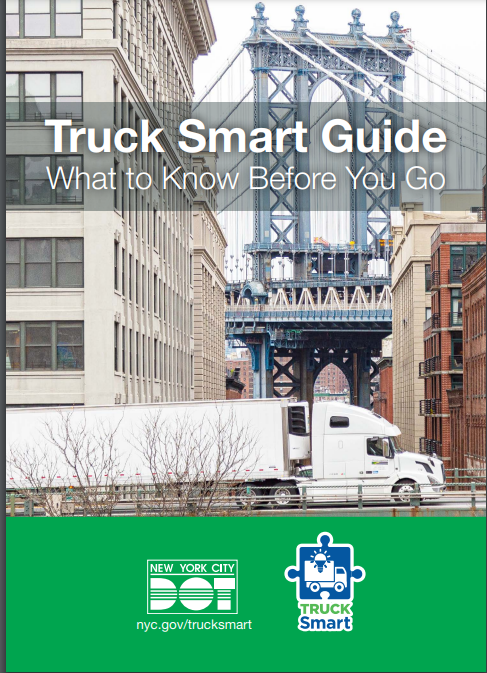Published on:
To reduce truck accidents in New York City, the NYC DOT and Vision Zero launches the TRUCK SMART Campaign
 While trucks remain essential in new York City, they pose a serious risk to other road users in particular to pedestrians and cyclists. According to statistics, 67% of truck accidents involving a cyclist or a pedestrian result in serious injury or death.
While trucks remain essential in new York City, they pose a serious risk to other road users in particular to pedestrians and cyclists. According to statistics, 67% of truck accidents involving a cyclist or a pedestrian result in serious injury or death.
The largest the truck, the most dangerous it is
Large blind angles can hide pedestrians and cyclists when they stand in front or on the side of a truck. Additionnally the heaviest a truck is, the longest it will take for the truck to stop.
Because they are so dangerous, trucks can only drive on specific roads in the city and the driver must follow specific rules while driving a truck.
To help truck drivers who are planning on driving in the city, the DOT in collaboration with Vision Zero just released a Truck Smart Guide
The guide is made of 4 sections
- The first section includes tips on safety such as what to look for during the pre-trip safety check, how to drive around pedestrians and cyclists, what are the bus lanes regulations and how to turn safely.
- In the second section, the DOT explains how truckers can proprely plan their trips using the Truck Route Map and understanding the difference between the Local Truck Route Network and the Through Truck Route Network. The DOT also recommends truck drivers to use a GPS that is programmed for commercial vehicles. After the route is planned on the GPS, drivers should make sure that the route suggested by the GPS is on the truck route map. In addition to only be able to drive on specific streets of the city, trucks are not allowed on any parkway and truck drivers must be on the lookout for roadway signage. One of the main reasons why trucks can not drive on parkways is that many bridges over the parkways are low and trucks may get stuck. Depending on their size and weight, trucks may also need permits to reach specific destinations.
- The third section provides advice and information on how to safely execute deliveries including night time deliveries, Neighborhood Loading Zones and sharing delivery space with Cargo Bicycles as well as safe parking tips.
- In the last section, the DOT lists the programs that truck drivers should be aware of such as Off-Hour Deliveries Program, Truck Safety Education Programs, NYC Clean Trucks Program and Open Street and Open Restaurant which could impact the truck routes.
The truck smart guide can be downloaded here
 New York Personal Injury Attorneys Blog
New York Personal Injury Attorneys Blog


